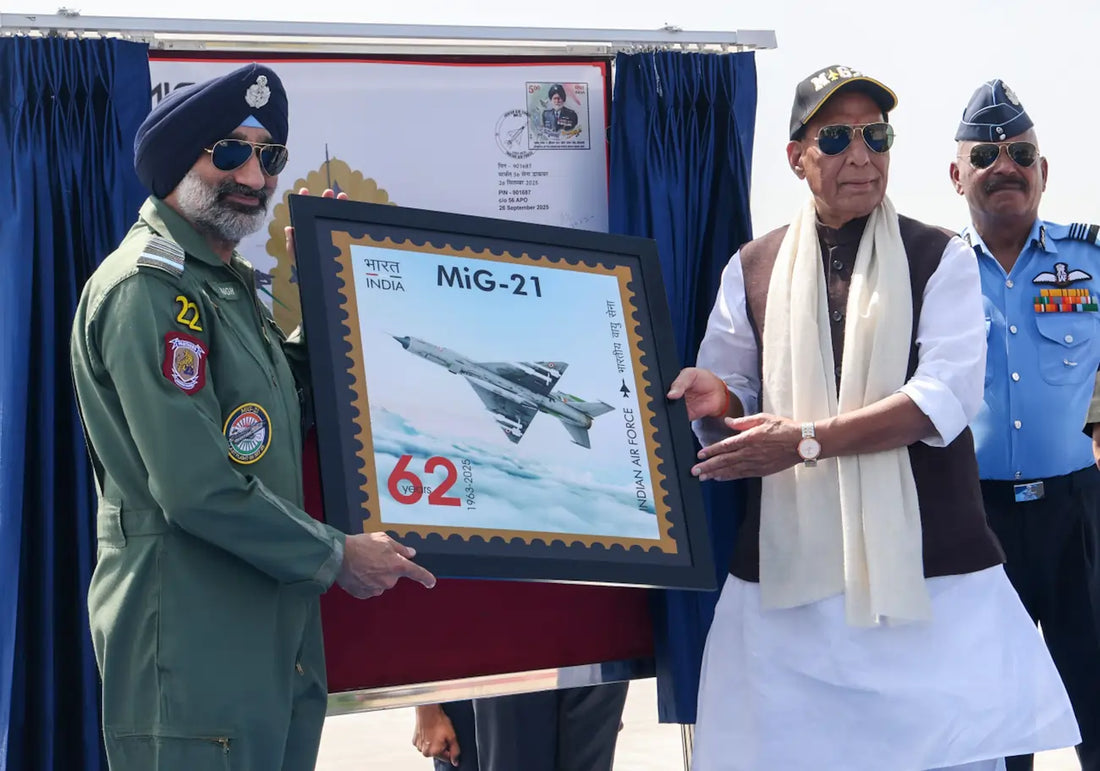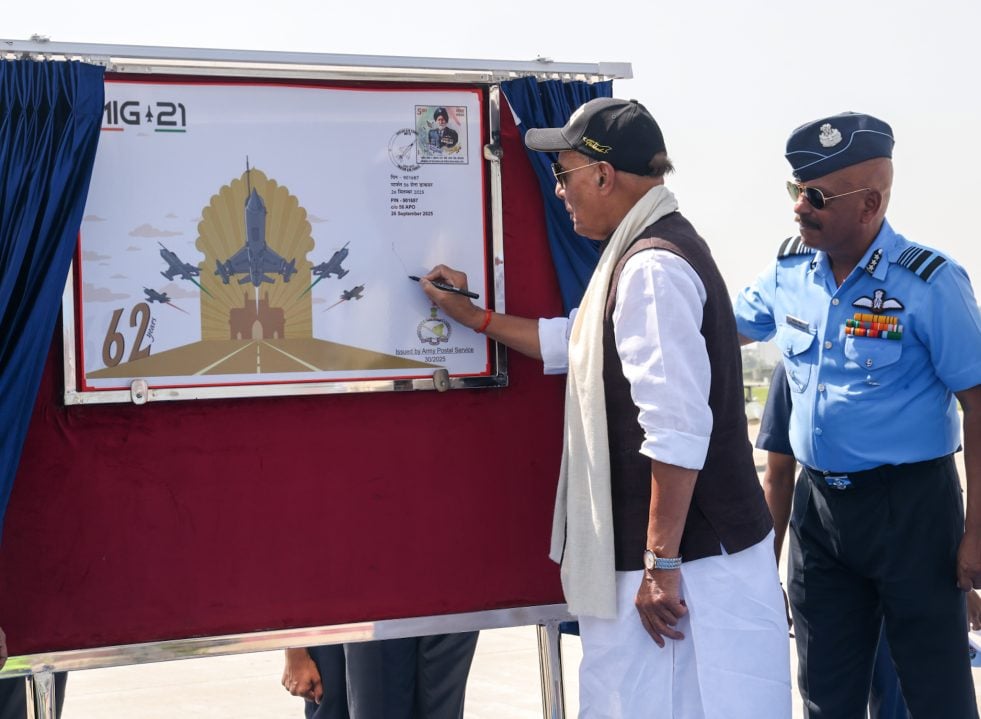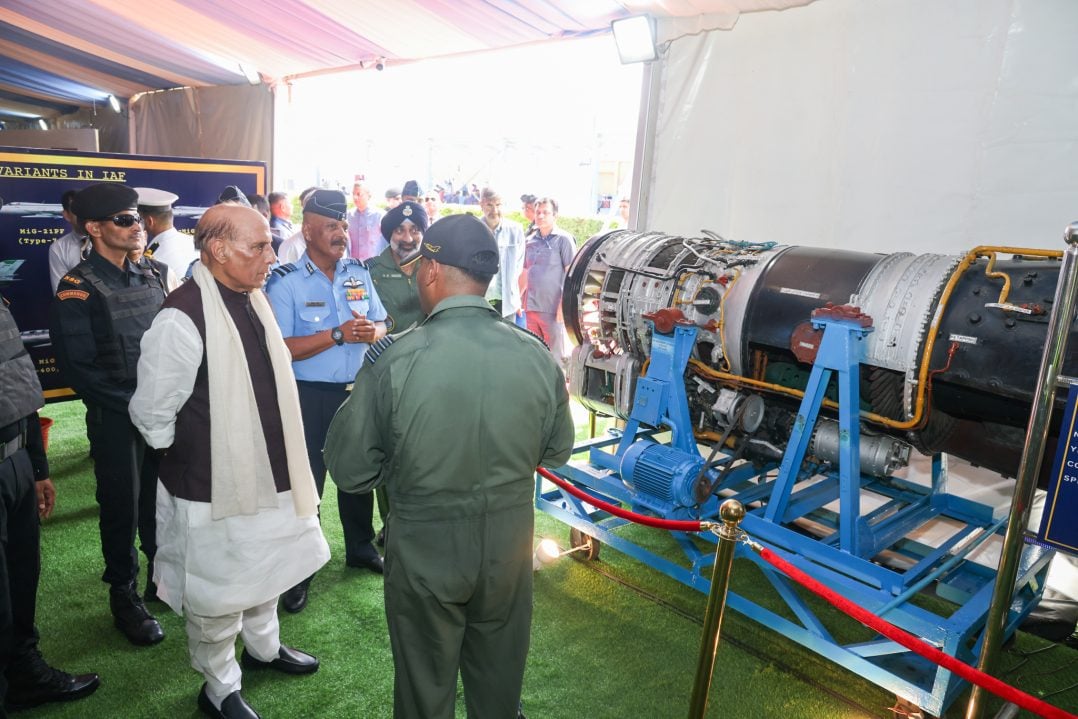MiG-21 Decommissioned: A Historic Milestone in India's Aviation Legacy

The storied MiG-21 fighter jet, a mainstay of the Indian Air Force for over 60 years, officially concluded its service today at a decommissioning ceremony in Chandigarh. This event marked the last operational flight of the famed aircraft, closing a significant chapter in India's military aviation history.
During the ceremony, Defence Minister Rajnath Singh praised the MiG-21 as a timeless emblem of "courage, discipline, and patriotism." He noted that its legacy would continue to inspire the development of India's indigenous aircraft, such as the Light Combat Aircraft (LCA) Tejas and the future Advanced Medium Combat Aircraft (AMCA). "The MiG-21 taught us to embrace change with confidence," Singh stated, emphasizing the united effort of research labs, defence public sector undertakings, startups, and academia to carry forward its legacy.
First introduced into the Indian Air Force in 1963, the MiG-21 significantly enhanced India's aerial combat capabilities. With over 11,500 units built worldwide and about 850 serving in the Indian Air Force, the aircraft's popularity and versatility were evident. Singh described it as "a bird of all seasons," excelling in various roles including interceptor, ground-attack, air defence, and as a trainer for generations of fighter pilots.
The MiG-21 demonstrated its capabilities in numerous conflicts, from bombing the Governor's House in Dhaka during the 1971 war to playing a role in the Kargil conflict, Balakot airstrike, and Operation Sindoor. "In every significant mission, the MiG-21 carried the Tricolour with honour," Singh asserted, highlighting its consistent contribution to India's air power.
Singh paid tribute to the air warriors who operated and maintained the aircraft, describing the MiG-21 as "more than just a machine — a national defence shield and a faithful companion." He noted that the aircraft evolved over time, with upgraded variants like Trishul, Vikram, Badal, and Bison maintaining its effectiveness into the 21st century.
Addressing misconceptions about the aircraft's age, Singh clarified that while older models were retired long ago, the ones in current service were less than 40 years old, a typical lifespan for fighter jets globally. He credited Hindustan Aeronautics Limited (HAL) for consistently upgrading the aircraft with advanced radars, avionics, and weapon systems, keeping it combat-ready for decades.
Singh emphasized that the farewell was more than just a military tradition; it was rooted in India's cultural ethos. "Our culture teaches us that divinity resides not only in living beings but also in the tools that serve us," he said, comparing the farewell to the traditional Dussehra rituals of venerating weapons.
Chandigarh, where India's supersonic era began with the induction of the MiG-21 into No. 28 Squadron, 'First Supersonics,' served as a fitting venue for the aircraft's final salute. "History comes full circle today as we bid farewell from the same soil where our supersonic journey began," Singh remarked.

The decommissioning ceremony included a series of impressive aerial displays, such as a skydiving demonstration by Akash Ganga, MiG-21 formation take-offs, and precise manoeuvres by the Air Warrior Drill Team and the Surya Kiran Aerobatic Team. A significant joint flypast by a MiG-21 and LCA Tejas symbolized the transition from legacy to indigenous technology.
The event concluded with a ceremonial shutdown of six MiG-21 aircraft, followed by the handing over of the aircraft's Form-700 document to the Chief of the Air Staff. A commemorative stamp and special day cover were also released to mark the occasion.

The ceremony was attended by Chief of Defence Staff General Anil Chauhan, Chief of the Naval Staff Admiral Dinesh K Tripathi, Chief of the Army Staff General Upendra Dwivedi, Secretary DDR&D & DRDO Chairman Dr. Samir V Kamat, and senior defence officials. Veterans, engineers, technicians, and ground crew who served with the MiG-21 throughout its service life were also present, underscoring the deep connection the aircraft shared with generations of air warriors.
As the MiG-21 takes its final bow, its legacy remains influential in India's future defence innovations. "When the world looks at India tomorrow, it should see a nation that began with the MiG-21 and now leads with next-generation technologies," Singh concluded, marking the end of a significant era and the beginning of another.



















